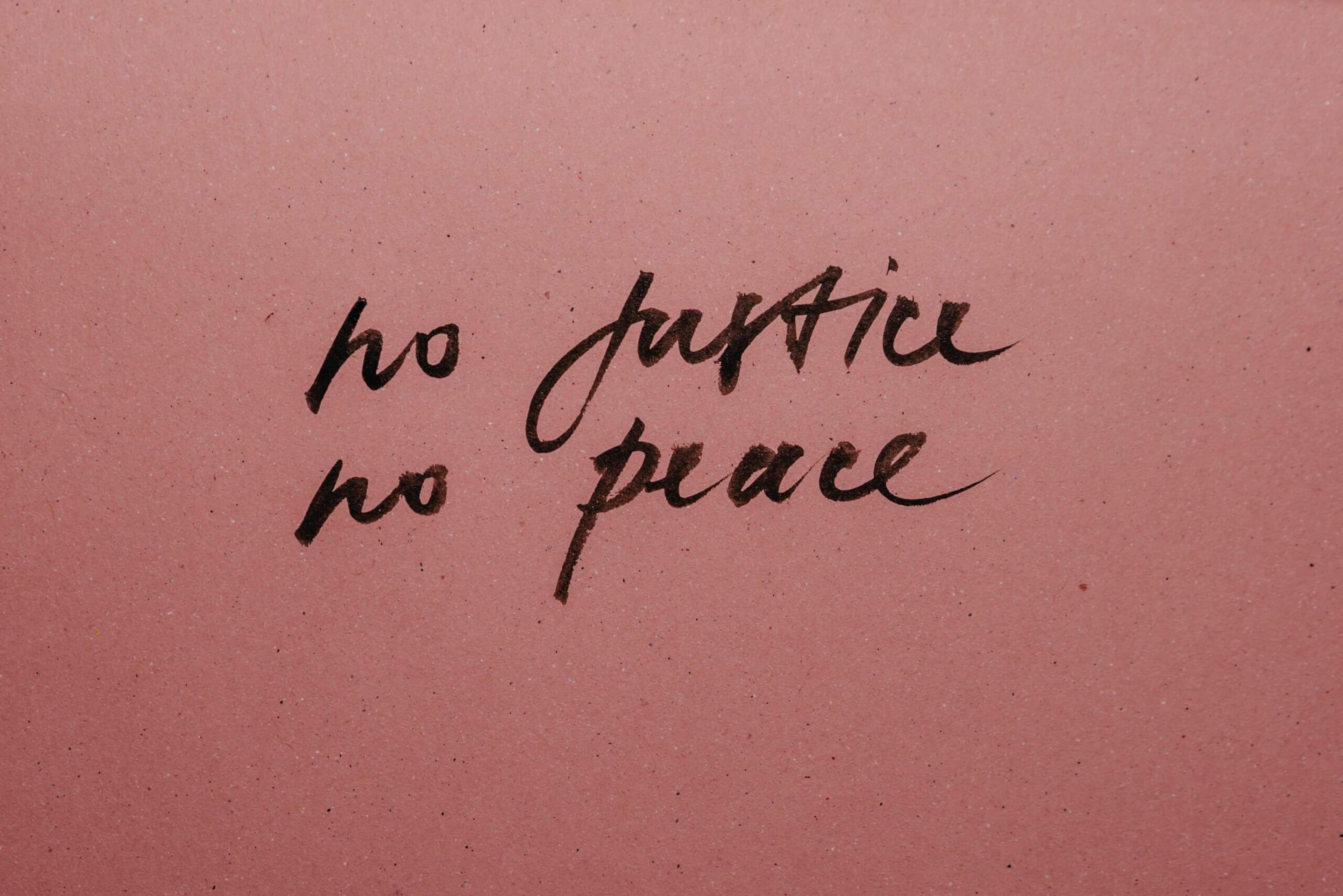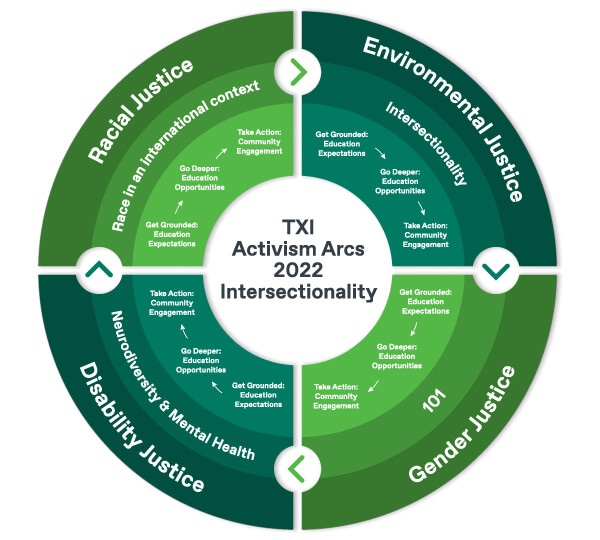Social Justice in the Workplace: Learn More About TXI’s Justice Pillars

At TXI, we structure our DEIB work around four justice pillars: racial justice, environmental justice, disability justice, and gender justice.
But what exactly is a justice pillar? And how does this framework help us work toward our goal of improving organizational diversity?
Equity Officer Lloyd Philbrook and Community Engagement Chair Kara Carrell recently shared how the idea of justice pillars came about and what rituals they lead around each of them.
“One of the points of having these pillars for our organization is to give us the scaffolding we need to think about different areas of social justice on a regular basis and own this work in the long term,” Lloyd said. “This isn’t just a quarterly endeavor; it’s something we’ll do year-over-year to grow our capacity.”
The Origins of Justice Pillars at TXI
During conversations about the company roadmap in 2020, as the leader of TXI’s community engagement work, Kara proposed the idea of grounding their work in justice pillars because the DEIB team was looking for a way to more clearly define its focus when it comes to engaging with the community.

In order to do more than just talk about race or gender or disability, Kara recognized that the company would benefit from using a justice lens to integrate these social and societal issues in all the facets of work that we do.
“At the time, many of the conversations happening in the company were about racial justice. It was easy to define and there was a clear directive: we knew we wanted to become an anti-racist organization, and this meant that we needed to focus on racial justice,” Kara said.
The other pillars also grew from work and interest that already existed within the company. With our existing Green Team, we saw an opportunity to expand this work into an environmental justice pillar. Similarly, the accessibility work that was already starting to happen within TXI could be supported by a disability justice pillar.
In Kara’s words, “Each pillar represents our commitment to getting closer to achieving justice in that space or being complicit in it not happening.”
The Anatomy of Justice Pillars and Activism Arcs
Formally speaking, each justice pillar represents a topic area that’s been selected for a multi-year engagement. Our intention is to raise awareness and understanding around these ideas and related concepts to unlearn our biases, with the ultimate goal of fostering better connections and improving our company’s strategy and impact.
As we’re launching a new pillar around gender justice this quarter, we currently have four pillars and each will be the focus of one quarter this year. Once we’ve mapped out our quarterly focus for the year, we identify what the activism arc for that period will look like.
An activism arc is a framework we use to structure our team’s education and engagement around a pillar–each typically lasts for one quarter. These arcs help our team develop a more nuanced understanding of complex concepts over time and typically follow a three-part plan:
- Get grounded
- Go deeper
- Take action
While our expectation is that folks will show up and develop a shared understanding, we then provide opportunities for folks to go deeper into the topics and propose ways to take action in those areas.
The first phase—getting grounded—is all about setting expectations for education within the company around that justice pillar.
We use our quarterly all-hands meetings as an opportunity to lead an all-company workshop related to the topic of the current justice pillar, plan a series of related weekly tips to share in the DEIB Slack channel, and plan at least one brunch and learn for that quarter.
At TXI, a “DEIB tip” is a piece of knowledge that a subset of our DEIB team curates and shares on a weekly basis. These focus on a variety of topics, some of which are related to what we're focusing on that quarter or what's going on in current events. Anyone on the team can submit a tip for the DEIB team’s consideration.
Moving onto the second phase, we go deeper into our exploration of that justice pillar by creating additional education opportunities for the team. These may include…
- Additional brunch and learns.
- A watch party for a relevant movie.
- Interacting with additional tips in the DEIB Slack channel.
- At least one Inclusivv conversation.
We partnered with Inclusivv to provide structure for creating conversations, both internally and externally. We know that sharing stories and being in vulnerable conversation with each other fosters trust and connection, which are invaluable to community building and moving forward towards justice—Inclusivv helps us create safe spaces where this can happen.
After we’ve gone through these first two phases, we plan community engagement efforts in phase three,. Ideally, this will include…
- A volunteer event.
- A round of direct grants from our sustainable giving fund to related groups and organizations.
- Engaging with at least one community organization.
- Publishing at least one blog post where we share what we’re up to with the TXI community at large.
As we enter our second year of enacting these rituals, they’re sure to evolve and grow to meet the needs of our team and communities.
Growing Strong Roots Through Justice Pillars
As we continue to learn and grow as individuals and as an organization, our intention is that these pillars and the arcs within them will give us the structure we need to hold the organization accountable to its employees and to our community partners.
By building our education and engagement programs around strong pillars that are rooted in a justice framework, we hope to make space for people to level-up their understanding of what it means to be part of an organization that is committed to DEIB–not just in terms of employee-employer relations but in how it interacts with clients, projects, peer companies, and community partners.
If you’re looking for support on a justice-oriented project or if you’re looking for a team of professionals that has experience with this mindset, reach out and start a conversation.
Published by Lloyd Philbrook in disability

Let's shape your insights into experience-led data products together.


